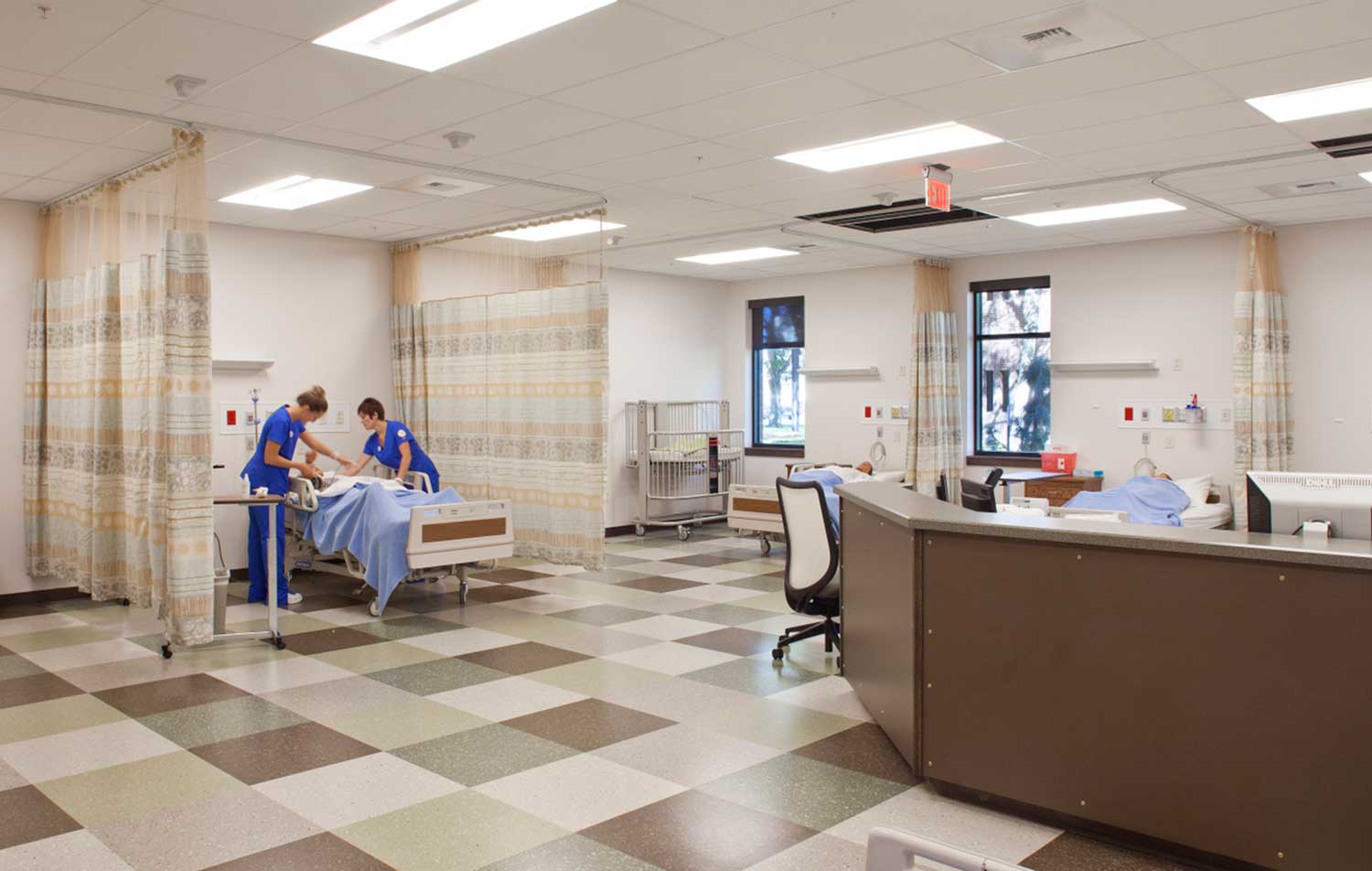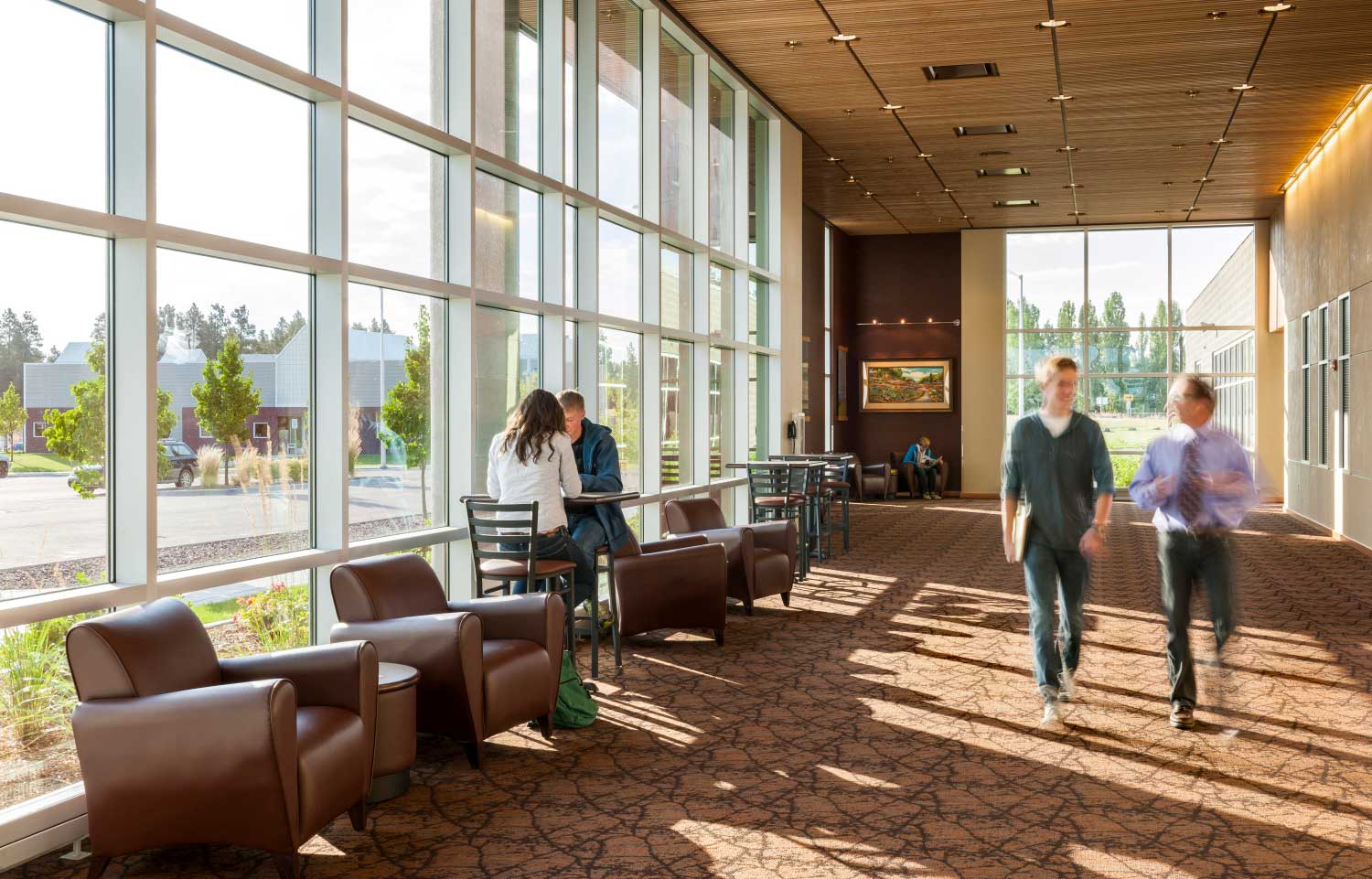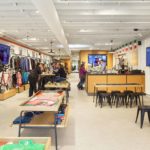Designing Educational Facilities for the Next Generation of Healthcare Workers
There are an estimated 175,900 job openings for registered nurses each year through 2029 — and these are not positions our country or communities want to leave unfilled. The figure comes from a 2019 report from the Bureau of Labor Statistics, and it highlights the need to continue building this essential workforce.
It also correlates to building and updating learning facilities to best train healthcare workers so they can step into their fields well prepared to keep the nation safe. It’s not just about filling gaps in the labor market, but also about ensuring the next generation of healthcare workers are set up for success.
The pandemic has only underscored the value of nurses and other healthcare workers, as well as highlighted the toll shortages can take on an overwhelmed system. Hospital personnel shortages have been problematic, especially in COVID hotspots. Mississippi has 2,000 fewer nurses than it did at the beginning of 2021, and Louisiana is facing 6,000 vacant nursing positions.
Even before the pandemic hit, other trends in the country pointed to the need to bolster this sector. For example, demand for healthcare will only increase as healthcare reforms take place and the Baby Boomer generation continues to age.
This all points to the need to grow and improve healthcare education centers. A strong workforce starts with a strong educational foundation, and this goes far beyond a traditional classroom or lecture hall environment for nurses and other healthcare workers. This means technology-enriched, hands-on learning spaces dedicated to simulation and real-life experiences, which also serve to inspire wellness, compassion, and visionary ideas.
Fast fact: The RN workforce is expected to grow from 3 million in 2019 to 3.3 million in 2029, an increase of 221,900 or 7%.
— Bureau of Federal Labor Statistics
Core components of a facility designed for educating nurses and other healthcare workers
When designing educational environments for healthcare workers, we rely on three primary strategies.
Immersive learning:
Incredibly important is the ability to mirror real-world healthcare environments for experiential learning opportunities. This is where the magic happens. Our team of design professionals utilizes their deep knowledge of both education and healthcare design, as well as the needs of healthcare providers across the country, to create realistic scenarios with all the right equipment and technology in place. Some of our highest priorities lay in planning and programming to ensure efficiencies and dedicated space for all healthcare curriculums. We approach the design of educational spaces from a research perspective, designing for the future, and thinking broadly and holistically about building-wide systems, space adjacencies, and flexibility.

For the LEED Gold-certified Health Sciences and Human Services building at the College of Southern Idaho (CSI), Cushing Terrell provided programming through construction services. The building houses CSI’s healthcare education programs with classrooms, lecture halls, simulation training spaces, and administrative and faculty offices. The project was the recipient of an Outstanding Design Award from American School and University.
Flexibility and adaptability:
Healthcare facilities must be designed to adapt to changing circumstances and so must the places people learn. Understanding the needs for each program, and then incorporating ways to make spaces flexible creates multi-use scenarios for unique and specific applications. We also must be able to forecast where healthcare technology or advancements in practice are headed. With a detailed understanding of the jobs performed within healthcare spaces, we can allow for adaptability, and take advantage of cross-over, when those spaces serve educational needs. We ask questions such as: Where and how is the learning or healthcare being administered? For example, telehealth and remote learning are similar and both require reliable technology and properly designed environments to be successfully executed.

The Northwest College Yellowstone Academic Building features technology-rich learning labs/classrooms, high-tech nursing simulation labs, forensics lab, and criminal justice simulation lab, as well as community meeting spaces and faculty offices. The building provided a much-needed expansion of critical programs for the college and met additional community needs. It was featured as an “Outstanding Project” in Learning By Design magazine.
Evidence-based design:
Evidence-based design (EVD) is a major consideration when designing healthcare facilities, both in practice and in education settings. This means using research and data to inform the design and impact outcomes, as well as helping care providers perform their work more efficiently and in a way that enhances patient safety. It’s essential that facilities teaching patient care have the same design considerations. EVD can help inform decisions such as creating space for respite and repose, for example. Research shows that such areas are essential in high-stress environments. Healthcare facilities and teaching facilities are not just about learning the job, but also learning how to manage mental health and well-being.

The Broussard Center for Nursing & Health Science at Flathead Valley Community College includes state-of-the-art lab and mock nursing stations. The facility provides flexible spaces designed to adapt to varying teaching styles. In addition to general classrooms and study areas to encourage group collaboration, the inviting main lobby serves as social gathering and study space with panoramic views of Glacier Park.
Prioritizing these elements in design will translate to how future healthcare workers adapt to the facilities they go to work in and the jobs they perform. Such educational centers must be student-centered and include active labs, workshops, project and demonstration areas, as well as enhance community partnerships and opportunities for interaction with real-world scenarios and needs.


